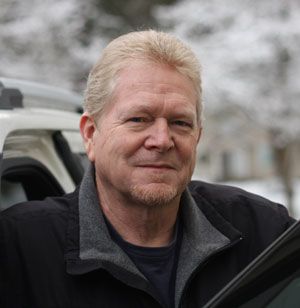It pays to attain automatic driving habits
From novice to old pro, drivers should practice certain actions that become “automatic.” By doing things repetitively, each and every time they are warranted, some driving behavior can become genuinely automatic.
Acts like applying safety belts or adjusting the seat and mirrors should happen virtually without thought before every departure. Good habits that become natural or automatic not only help assure that we are up to the driving task, but free up our available cognitive thought for emergencies and other dynamic events.
In response to a previous column about turn signal use/nonuse, reader M.C. strengthened this sentiment. He opined, “One should habitually signal turns and lane changes whether there are others present or not. If one ‘automatically’ signals changes and turns the decision making part of the brain can concentrate on other variables. Deciding whether there are other road users present is not always accurate. When riding with others driving I almost always comment on failure to signal situations. I often get the answer that ‘there was not one else around.’ My reply is usually; ‘make it automatic’ so that you can think of other things. Removing the signaling from top of mind awareness leaves us all open for a more relaxed driving experience.”
His “automatic” signal stance is a worthy one. I activate mine that way (subliminally or automatically), and any driver who develops a do-it-every-time habit from the start should be able develop automatic activation. And I guess that’s the problem — too many drivers (both starting and continuing) don’t use signals for EVERY turn, merge or lane change, citing preposterous reasons, as M.C. points out.
I agree with M.C. that the “no one else around” defense is implausible. To me, when a tree that falls in the forest while “no one” is around, it still makes noise. Besides, it’s nearly impossible to be assured that no one is within earshot of the forest, or like M.C. suggests, within sight of your vehicle. I don’t think that anyone is all-seeing or all-hearing to the point that they can instantly determine if their signal will be seen or not.
I guess mere repetition has made using signals automatic, or second nature, for me. Auto-cancel on automobiles has hindered my development of an automatic skill to turn them off, however, evidenced by my periodic failure to cancel my motorcycle turn signals. This is most prevalent during spring riding; maybe I could perfect the skill if we had a year-‘round riding season.
The more I think of it, many driving actions have become natural for me, and qualify for the do-it-every-time standard. For example, I’ve developed a habit of taking a quick look at my tires before each outing to see if they are holding sufficient air. I’ve never found a tire that was fully flat, but I’ve spotted tires low on air or with foreign objects sticking out of the tread.
In fact, I’ve found nails, screws or bolts in my tires so many times over the years during that “pre-flight” inspection that I’m always a bit hesitant to look. Still, it’s better to have an advance warning of a puncture before the offending item flings out and the tire deflates suddenly. Or, you may even been able to pull the metallic pest out before it makes its way to the air chamber.
The list of potential automatic driving behavior is lengthy. You should automatically use your right foot for brake pedal application, for instance. That’s a necessity if you drive a car with a clutch pedal, but is preferred for all vehicles. Even though cars and trucks with automatic transmissions have only two pedals, using the right foot for both of them assures that you will not be “riding” the brake, or pressing both the brake pedal and the accelerator pedal simultaneously while stopped. On top of that, left foot braking is very likely to increase brake wear and reduce fuel mileage.
Remember, developing an automatic approach to many of the repetitive tasks of driving is best achieved if performing them ALWAYS. Your effort will be rewarded with increased safety and a heightened emergency readiness.
Readers may contact Bill Love via e-mail at precisiondriving@spokesman.com.
